November 2025 | Volume 3 | Issue 4 | Previous Issues
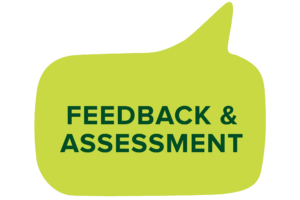
Each month, this year, we’ll be highlighting a teaching tip from one domain of the Teaching Effectiveness Framework (TEF). Our teaching tip for this month comes from the Feedback & Assessment domain. The approaches in this domain are used to continuously monitor performance and communicate progress and levels of mastery to students.
Develop Authentic Assessments
Authentic assessment is a term, coined in part by Grant Wiggins, for assessments that are tightly aligned with the learning objectives of a course or learning experience and have learners working on “real world” problems. These student-centered learning experiences provide opportunities to problem-solve, inquire, and create new knowledge and meaning. Authentic assessments usually have more than one “correct” answer but can be evaluated using a rubric that provides assurance that the data obtained from the assessment is valid.
What makes an assessment authentic?
In his essay, “The Case for Authentic Assessment”, Wiggins compares authentic assessments to traditional standardized tests. Although that direct comparison isn’t necessarily relevant in most higher education courses, we can pull some key traits of authentic assessments from that comparison:
- Require students to perform, in a real world (or simulated real-world) context, all of the tasks a professional would engage in to apply what they’ve learned.
- Involve open-ended and ill-structured problems.
- Often require collaboration and opportunities for interaction that are aligned to the real-world situation. For example, if the task is typically completed by a team in the field, then the assessment should be completed collaboratively by a group.
- Require learners to adopt a role to “rehearse for the complex ambiguities of the ‘game’ of adult and professional life.”
- Require learners to justify their answer as well as the process they used to decide on that answer.
- Are realistic, in that they aren’t timed, allow learners to use resources that would be available to them.
What are the advantages of using authentic assessment?
Using authentic assessments can require more effort and planning on the part of the instructor. Despite that increase in effort, both learners and instructors can benefit when a course uses authentic assessments. One of the benefits that applies to both learners and instructors is the increase in interest and engagement in the task. For instructors, it is much more interesting to explore and evaluate an array of different answers and approaches (and can be educational for the instructor, too). Learners have more motivation to work on the assessment: it is novel, creates a direct connection between the assessment and the “real” world, and clearly demonstrates to the learner how much they’ve learned and where they still have room to grow (i.e. authentic assessments are much more transparent to the learner).
Other benefits for instructors include an increased awareness of what students’ strengths and areas for growth are (both with respect to individual students and the collective), and an opportunity to connect with each individual learner. Since authentic assessments are directly tied to learning objectives, an instructor knows, with less ambiguity, what objectives students are meeting and which ones they are not. With authentic assessments, instructors get to connect with learners as they see the unique approaches each individual learner uses to solve the ill-structured problem. Many instructors teaching online value every opportunity to connect with learners they may never interact with face-to-face.
In addition to being more engaging, authentic assessments are usually more equitable for the diverse learners in a course. The design and selection of multiple-choice questions can include implicit biases that disadvantage some learners. Because authentic assessments are more transparent, don’t have a single right answer and require learners to justify their process and their answer, every learner has an opportunity to ask questions, identify and use resources, and “make their case” as to how their answer demonstrates their learning.
What are examples of authentic assessment?
Because authentic assessments are tied directly to the learning objectives of a course, program, or discipline, the examples provided here are of general categories/types of authentic assessments.
- Scenario-based learning & writing to a real audience
- Example – General Education Writing: The instructor designs scenarios for students to understand audience-centered writing. An example of a writing scenario could involve a historical event or person, where students write a letter providing advice to a historical person or take on the role of a historical person to suggest ways to address the historical event. Another example of a writing scenario could involve a human resource problem at a company, where students are asked to create a memo or policy to address the problem. These scenarios provide students with a real-world context for a specific audience and purpose for each formative assessment.
- Inquiry-based learning
- Example – Physics: Instead of providing students with step-by-step instructions on how to complete a lab, students are allowed to decide what data to collect, how to collect it, and how to analyze it to explain the physics principle or phenomenon. The instructor notices that student interactions increase as students voice their opinions and facilitate decision-making with their group (Nutt, 2020).
- Problem-based learning
- Example – Teacher Education: The instructor creates several student personas with different learning needs. Students work in small groups during class to discuss a student persona and brainstorm ideas on the student persona’s learning problem based on prior knowledge. Students decide roles and the steps to complete the assessment. During the next class session, each small group explains their student persona’s diagnosed learning need and describes examples of differentiation and scaffolding to adapt instruction to improve the student persona’s learning. Students receive feedback from their peers as well as the instructor.
- Project-based learning
- Example – Social Sciences: The instructor provides a list of societal issues aligned with the learning objectives that students will select from, or students have the option of submitting a different societal issue with an explanation of how it aligns with the learning objectives. Next, students will select the product or performance to demonstrate their learning. Students will then create a project plan and submit their plan to receive feedback from the instructor. Students adapt their project plan based on instructor feedback, begin research on the societal issue, and complete the product or performance to demonstrate their learning. Lastly, students present their product or performance asynchronously using a video recording tool.
- Design-based learning
- Example – Engineering or Architecture: Each design-based learning activity begins with a class discussion of a human-focused problem and personas (people who are impacted by the problem). For example, the instructor shows a picture of a public building and asks students to identify personas who might find the building inaccessible. Students spend time empathizing and defining the personas and goals of their redesign of the entrance. Next, students begin the ideation nonverbally using an asynchronous interactive board (Microsoft Whiteboard, Padlet, etc.) during class and then continue to ideate over the next few weeks. In a subsequent class, the instructor guides students through a discussion to determine the top ideas for solving the problem. Each group selects one idea to design and test. Students submit the prototype and reflection on the process for feedback and grading.
- Service Learning: Community-partnered research or project development
What are some practical tips?
- The first step to creating an authentic assessment is to write learning objectives that describe how learners will demonstrate their learning.
- If you typically use essays for assessing student learning, frame the writing assignment for an audience other than the instructor/instructional team, and ideally, find individuals who are part of that audience to provide feedback to the learners.
- Have students reflect on their own academic performance on each assessment. Having them identify their own misconceptions and mistakes enhances their learning, helps to develop their metacognitive abilities, and is representative of what a professional must do when they err.
- Have students create a lightweight portfolio where they reflect on what they learned from each assignment (either through making mistakes or by engaging in the learning that occurs when someone is assessed).
- Explore libraries of case studies online (e.g. Case Consortium at Columbia University, Michigan Sustainability Cases, Santa Clara Business Ethics, The Alan Turing Institute Data Justice Case Studies).
- When grading, use a rubric that keeps the grader’s focus on the most important standards you want learners to meet.
This work is adapted from original articles licensed by Kennesaw State University and University of Illinois Chicago under a Creative Commons Attribution-NonCommercial-ShareAlike 4.0 International License by the Center for Teaching & Learning Innovation (CTLI, Vermont State University).
Changes include blending content from the two sources.

Christopher Boettcher
This month, we have the pleasure of highlighting the work of Castleton-based professor Chris Boettcher. As a member of the Arts, Humanities, and Communication department, he specializes in nineteenth-century literature, British Literature, and general education courses in reading, writing, and speaking.
Please tell us a little bit about your background and what brought you to VTSU.
Back in the 90’s, in addition to being a poor graduate student, I took an avid interest in the band Phish. Going to shows brought me to Vermont, and, after some of the festival shows at the end of tours, I got to spend some time in what seemed like an almost paradisial place. When faced with a decision about where to look for work, I searched for Vermont jobs. So I was thrilled when one appeared at Castleton State College. I was working a one-year position in Arkansas after leaving non-tenure stream positions at the University of Pittsburgh where I had done my graduate studies in English. By this point, I knew that I wanted to focus much more on teaching than research in Irish literature and nationalism (my focused research interest), and I had been tested by a year teaching first-year writing at an open-enrollment school. At the time, Castleton was also actively recruiting to build capacity in service-learning, in which I had built a special expertise. Coming to Castleton ended up being my dream job.
What important lessons have you learned from VTSU students that have shaped you as a teacher?
I’ve seen both the tremendously positive things that our students are capable of as well as the incredibly damaging things that they can do to themselves and to other people. Early on in my teaching here, I began to think about agency, how to build our students’ sense of self-efficacy and abilities to follow through on the things they imagine. I sought out colleagues who helped students to grow as confident people, and not just as intellectual subjects. The kinds of things we talked about were not always the typical “academic” or even “soft” skills. But having lived here long enough, now, to be running in professional networks in the Rutland area, I often know when our students have established themselves successfully. Our students start amazing careers, but I’m aware of some being fired for repeating the ways they conducted themselves as students. They can become leaders in their communities or make the lives of their unfortunate co-workers miserable. I have been personally and profoundly impacted, as a community member, by both kinds of outcomes of our education. Just thinking about careers and what leads someone to be successful, I think that the work we do helping our students grow as responsible human beings can far exceed in importance the strictly academic or professional preparation that we imagine we are providing.
Is there any advice you would share with first-year instructors based on your own experiences in previous years?
First of all, I would urge them to be kind to themselves and to keep believing in themselves. The first year can be wonderful, but even the most confident of us will have some low moments when it seems like we just aren’t getting the job done. Then I’d say to be realistic about what you can accomplish and should take on beyond your teaching load. Junior faculty often feel like they have to join any committee or project that comes calling in hopes of recognition and adding to a case for tenure. Choose carefully and do what is aligned with what really matters to you. And finally, play the long game. The first semester is just about seeing what it’s like. From there, if you need to, make small, manageable changes that will help you take a step forward. You never really know how to teach any course until, at least, after the third time you have taught it. Be critical and look to improve, certainly but also be kind and generous with yourself in those first few iterations.
Are there specific student assessment methods you integrate into your courses and would recommend to your faculty colleagues?
This is a tricky question because of how much assessment and grading, engagement, and extrinsic motivation are tied up in the activities we plan for assessment. I probably most prefer forms of “authentic assessment” when the assessment tasks are aligned with “real-world” problems or scenarios. In English classes that is a little challenging because the tasks can quickly become about problems shaping the work of libraries or schools. So the context can quickly cancel out any engagement gains from it being “real-world.” But my teaching began to change the most when I started to imagine where students would really apply what they were learning in venues beyond places where books and reading are central to what goes on there. I’ve learned a lot from my colleagues in professional programs in this regard.
Are there any classroom assessment techniques that you utilize as low stakes or no stakes activities? If so, how have they improved student learning?
My go-to activity is “fist to five.” To do it, you raise a question and then ask students to provide, “on the count of three,” a rated response between “fist,” typically the lowest number, and “five,” being the highest. (I will often ask students not to use “three” which is sometimes perceived, incorrectly, to be the middle choice…). This is a quick and easy way to assess where students are or to get a quick response from everyone. I might use it several times in a class session. First, I might use it as an icebreaker, asking about the weekend or students’ energy levels. I might use it later to find out about how students understand a concept or their perceived confidence with a specific task I’ve assigned. When I ask students to reply to a prompt, I’ll often ask them to hold the numbers and look around. We will all notice outliers—I’ll acknowledge that there may be “fists” and depending on the question will frequently follow up with specific students—and we can get a quick idea of consensus of where everyone stands. A rating may then lead me to take some time on an explanation or to pick a specific possible path mapped out in my lesson plan. It’s a good, low stakes technique for involving everyone and starting to make students understand that they are contributing to the direction that a course or class session may take.
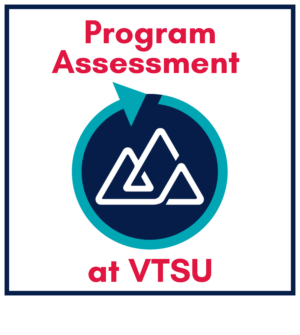
Program Assessment: Fall Workshop Series
Program assessment at VTSU is in its second year. We encourage all faculty to follow the program assessment road map and join one or more sessions in support of their efforts. These workshops will take place on Zoom, Fridays from 2-3pm EST.
Workshop Dates & Topics:
- 11/7: Collecting & Analyzing Indirect Measures
- 11/14: PReCIP Report for Non-Externally Accredited Programs (Due June Yr 5)
How to Sign-up:
Register for one or more sessions. When you do, you will receive an automatic email from the CTLI confirming your registration. This email will include the Zoom link and the option to “add to calendar” using an embedded hyperlink – this will work for Outlook, Google Calendar, and Yahoo Calendar.

Building Anti-Racist Educators: Reading & Inquiry Series
This Reading and Inquiry Series provides a monthly set of tools for learning, introspection and having conversations about issues of racism in our university, classrooms and communities. We hope that through regular reflection and conversation, you can get better at recognizing and resisting your biases and the impact they have on your students and colleagues.
Meetings:
The group will be meeting via Zoom on the following dates:
- Monday, November 17th (12:00-1:30p)
- Monday, December 15th (12:00-1:30p)
- Thursday, January 22nd (3:00-4:30p)
How to Sign-up:
To receive a calendar invitation, Zoom link, and access to the group’s Canvas space, please fill out the Vermont State Colleges Building Anti-Racist Educators Sign-Up Form.
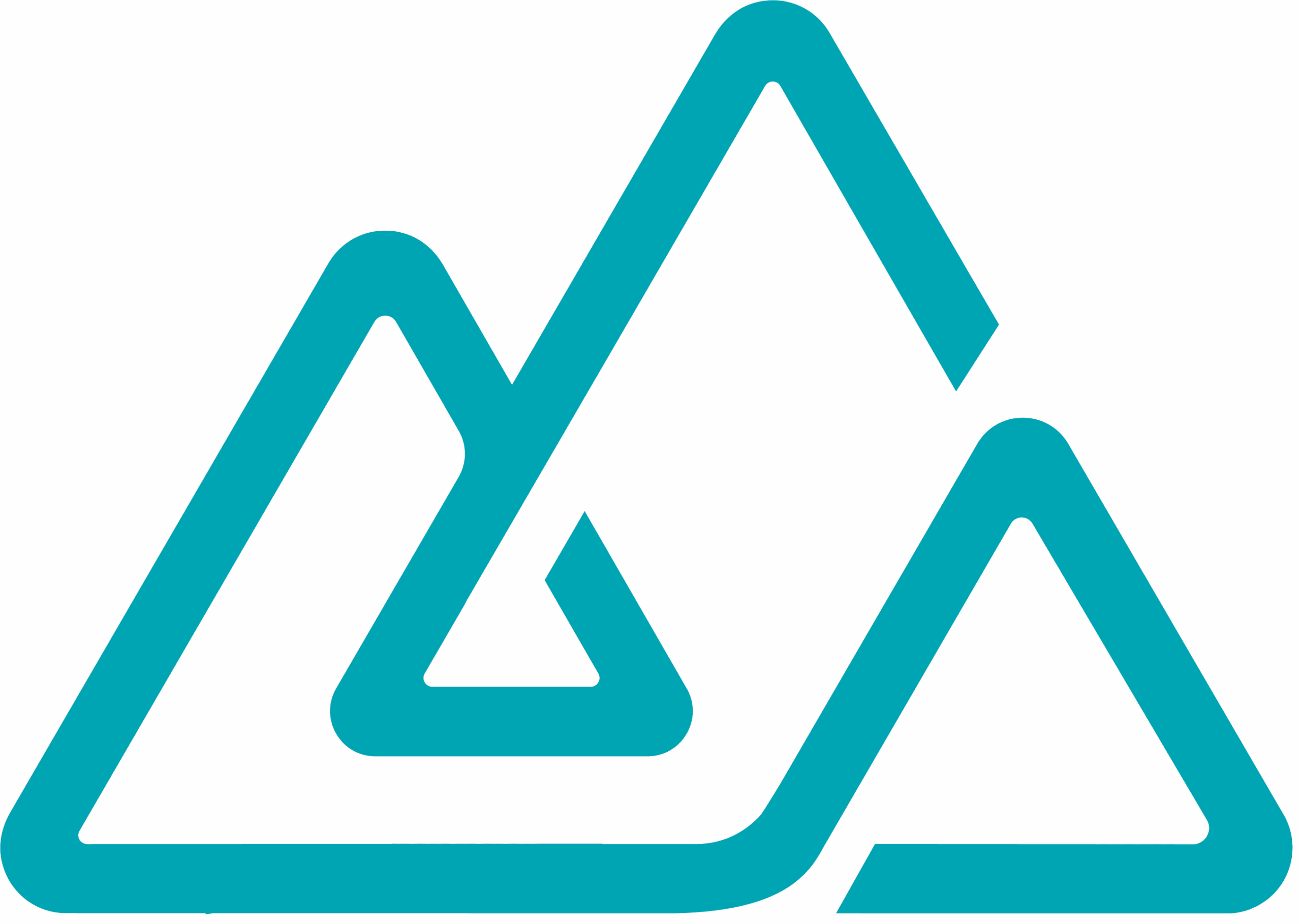
Upcoming Workshops
- November 5 @ 12:15 pm – 1:15 pm
Adult Learning in Online Classes at VTSU
- November 7 @ 2:00 pm – 3:00 pm
Program Assessment: Collecting and Evaluating Indirect Evidence
- November 14 @ 11:00 am – 12:00 pm
For New VTSU Faculty: Fall Friday Sessions
- November 14 @ 2:00 pm – 3:00 pm
Program Assessment: The PReCIP Report for Non-Externally Accredited Programs
- December 4 @ 12:15 pm – 1:15 pm
Adult Learning in Online Classes at VTSU
- December 5 @ 11:00 am – 12:00 pm
For New VTSU Faculty: Fall Friday Sessions
- January 16, 2026 @ 11:00 am – 12:00 pm
For New VTSU Faculty: Spring Semester Kick-Off
As you likely know, starting in April 2026, all public higher education institutions of our size must be compliant with new regulations for accessibility of digital content. The regulations are based on the WCAG 2.1 AA standards, which are written for a technical audience.
In the CTLI, through the EdPros workshops, reading, and LinkedIn Learning courses, we have been gaining knowledge of digital accessibility. And we are creating tutorials on some of these key skills for faculty, translating the technical standards for general users. We are collating digital accessibility resources on our webpage for easy access, as well.
Check out our fourth tutorial on the Top 5 Best Practices for Creating Alt Text, Image Descriptions, and Captions. And see if you can ace the knowledge check at the end!
Previous Tutorials:
- Top 5 Best Practices for Structuring Accessible Documents
- Top 5 Best Practices for Creating Accessible Hyperlinks
- Top 5 Best Practices for Selecting Accessible Color Combinations
If you have feedback on the tutorial or topics you’d like to see us cover in future months, let us know by emailing ctli@vtsu.edu. Thank you so much.
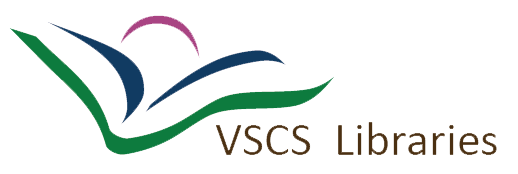
VSC Libraries
How can you support the VSCS Libraries?
Support the VSCS Libraries by taking full advantage of our services and resources and encouraging your students to do the same. We are a small, but mighty team ready to help you and your students! For example, some faculty encourage their students to contact a librarian with a basic question at the beginning of the semester!
Virtual Displays
Vermont Reads
This November, VSCS Libraries are taking part in the Vermont Reads program. This year’s common read is The Light Pirate by Lily Brooks-Dalton, which follows the narrator Wanda as she inhabits a landscape eroded by climate change. Copies of The Light Pirate are available at all the VSCS campus libraries.
Native American Heritage Month
Discover our curated collection of books, websites, and videos. Explore and share the Native American Heritage Month display with your students.
Accessibility Audit
As you’re updating your courses, we’re updating our materials and website to meet the WCAG 2.1 AA accessibility requirements. Thanks for your patience. Please reach out to us with any questions or concerns. You can also check out our Electronic Resources Accessibility page for updates.
Weeding the Collection
Weeding? And books? Do those words even belong in the same paragraph?!? If the very idea sounds like sacrilege, give us a minute to explain.
“Weeding” is a term commonly used among librarians to describe the work of maintaining the collection and deaccessioning titles. It increases the likelihood that relevant titles will be found by library users and ensures that we are providing current and accurate information. In other words, it’s a normal part of library work. Check out some of these (outdated, irrelevant, possibly smelly) titles we’ve come across in the process:
- Cognitive Ergonomics and Human-Computer Interaction
- The Managerial Woman
- Criminal Justice and Drugs: The Unresolved Connection

Student Success
First-Generation Student Day
November 8 is First-Generation Student Day and VTSU is celebrating on every campus and online on November 6, 2025. The idea of a first-generation college student goes back to the 1960s when the Higher Education Act of 1965 was signed into to law by President Johnson creating the TRIO programs. Read more about the rich history of TRIO and first-generation colleges students, and why we celebrate them here.
- Castleton – 12:30-2pm Atrium – swag, photo booth, treats, “What 1st Gen Means to Me” community art project, and more!
- Johnson – 12-2pm Stearns Dining – swag, treats, spin the First Gen Trivia Wheel, photo booth, and more!
- Lyndon – 9am-4pm Academic Support LAC 325 – swag, treats, and more!
- Randolph – 12-2pm Morey Dining – swag, photo booth, cookie decorating, and more!
- Williston – 12-2pm 200 Lounge – swag, photo booth, cookie decorating, and more!
- Online – Evening premier of VTSU First-Gen video – more details on this soon!
Making a Difference & Making a Living (MADMAL) Conference
Join industry leaders and innovators from around Vermont, including VSC Chancellor Beth Mauch, to learn about the transformative power of a college degree.
When: November 6, 9:00am – 3:00pm
Where: 67 Merchants Row, Rutland, VT, 05701 or Remote Viewing from VSC Campuses via Zoom
Register: http://www.madmalvt.org/rsvp
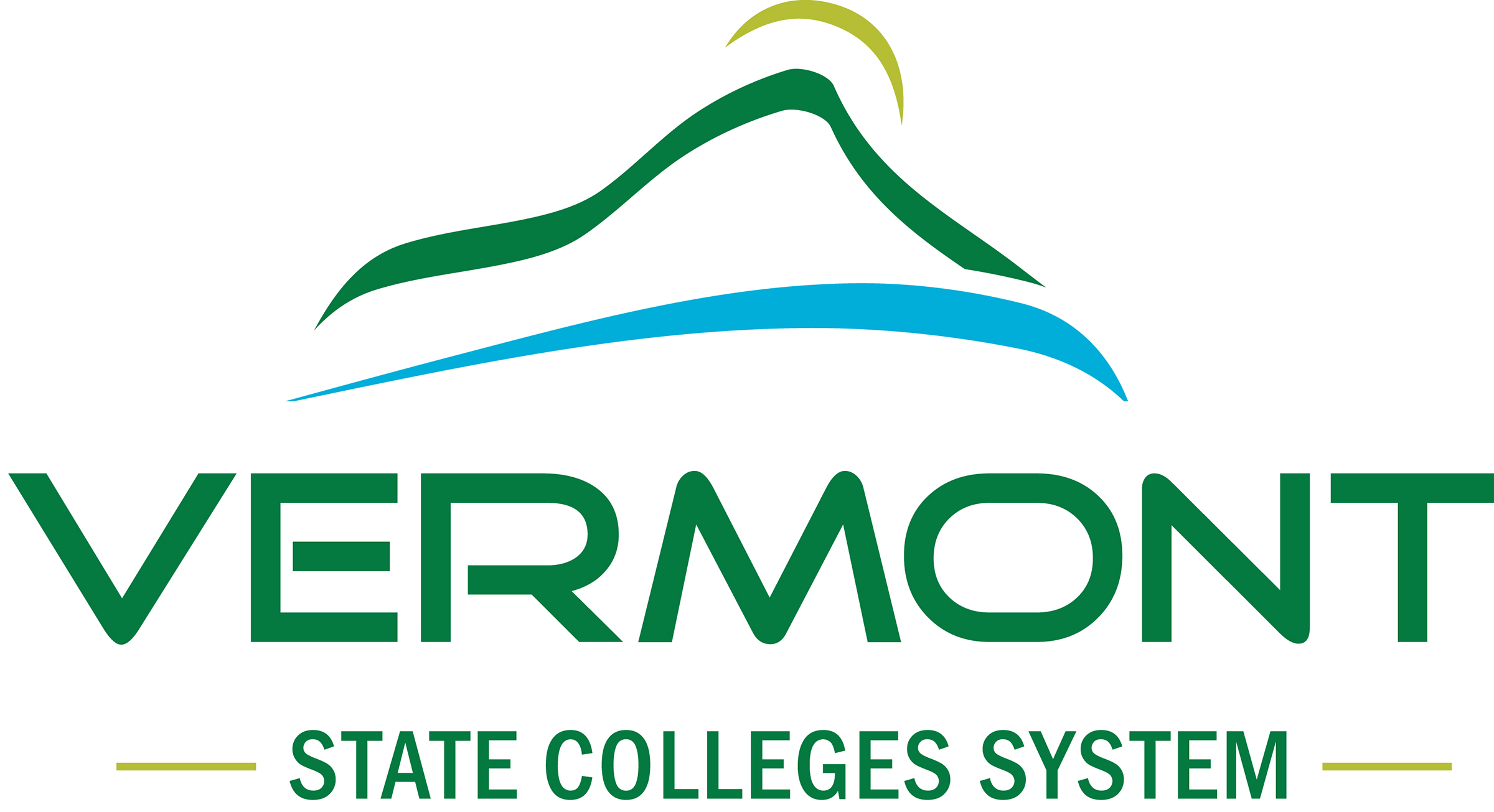
The VSC IT Learning Technologies Team
The VSC Learning Technologies SharePoint site provides the latest updates and resources for system-wide instructional tools and spaces.
The Academic Applications section of the site contains resources for Zoom, Nearpod, ReadSpeaker, Respondus, YuJa, Panorama (the new digital accessibility solution integrated within Canvas), and other VSC educational tools. The team uses the site to post timely content on topics like streamlining Canvas navigation for students, leveraging Turnitin, and considering solutions to Canvas storage limits. Contact Academic Applications (academicapps@vsc.edu) to suggest additional topics. Site visitors that need additional 1:1 assistance can learn how to connect with team members, including Senior Instructional Technology Specialist Sean Dailey who hosts drop-in Zoom sessions throughout the year.
Connect with VSC classroom technology staff and access VTSU and CCV equipment overviews, detailed technical guides, and responses to frequently asked questions, in the Learning Spaces section of the site. Visitors have access to classroom maintenance schedules, information about upcoming enhancements, and the types of support available for CCV, Castleton, Johnson, Lyndon, Randolph, Williston, and Nursing Telepresence configurations. The site also provides users with a space to troubleshoot and report technical issues.

VTSU Online Administration
Adult Learning Theory: Many of our online learners are 25 or older. Principles of andragogy can guide course development and approaches to teaching that more deeply engage adult learners and increase persistence and retention. This fall, VTSU Online and the CTLI are offering 3 more opportunities (once per month) for you to gain ideas about how to incorporate adult learning theory into your online teaching:
- Wednesday, November 5 @ 12:15 pm – 1:15 pm: Adult Learning in Online Classes at VTSU
- Thursday, December 4 @ 12:15 pm – 1:15 pm: Adult Learning in Online Classes at VTSU
